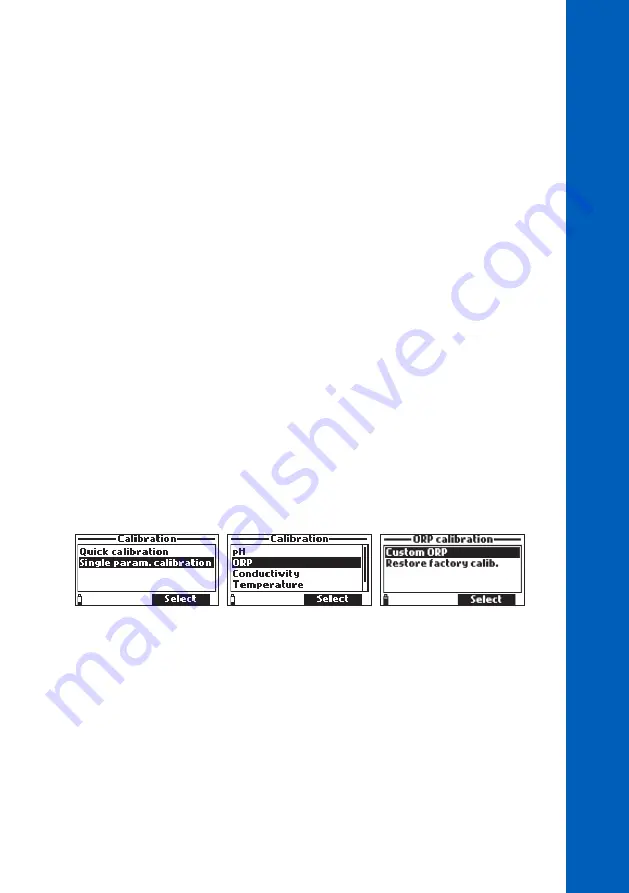
31
CALIBRA
TION
8.3. ORP CALIBRATION
The Oxidation-Reduction Potential (ORP), displayed in mV, is the voltage that results from the
difference in potential between the platinum ORP sensor and the Ag/AgCl reference electrode. ORP
values are not temperature compensated, although ORP values can change with temperature (e.g.
reference electrode potential changes, sample equilibrium changes). It is important to report ORP
values together with the reference electrode used and the temperature.
The inert platinum ORP surface provides an electron exchange site with the sample (or standard)
and its surface. The electron exchange is typically very fast in well-poised solutions (standards for
example), but may be more lengthy in natural water samples.
• Calibration is typically not required for a new ORP sensor, but the process does establish a baseline
that can be used as a comparison for future validations.
• Calibration is used to compensate for changes due to contamination of the platinum surface and
drift in the reference electrode.
A relative mV calibration can also be made to remove the voltage attributable to the Ag/AgCl reference
electrode (to display the ORP versus a SHE (standard hydrogen electrode)). This is an arithmetic
correction and is accurate only at the standard temperature. (For example,
HI70224
test solution
reads 470 mV at 25 °C versus the Ag/AgCl reference. The ORP mV versus a SHE would be 675 mV.
Add 205 mV to the observed value.)
From the “Calibration” menu select “Single param. calibration” and then “ORP”.
Options:
•
Custom ORP
: Perform a single point calibration using a custom point.
•
Restore factory calib
.: Restore the factory calibration if a new sensor has been installed.
The calibration should be performed at temperatures between 20-26 °C.
Custom ORP Calibration Procedure
1. Remove the shield from the probe. Rinse the probe with purified water.
2. Fill the calibration beaker 2/3 full with the ORP test solution with a known concentration.
3. Immerse the sensors in the solution. Raise and lower the probe several times then discard this
solution.
4. Fill the calibration beaker 2/3 full with the ORP test solution with a known concentration.
5. Slowly place the sensors in the solution. Dislodge bubbles that may adhere to the sensors.
















































